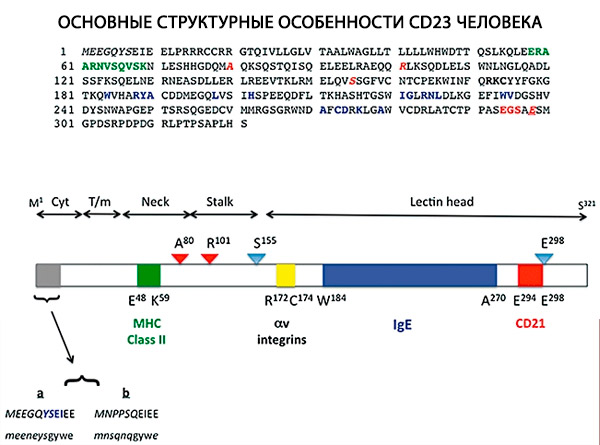Medical expert of the article
New publications
Activated B-lymphocytes (CD23) in blood
Last reviewed: 05.07.2025

All iLive content is medically reviewed or fact checked to ensure as much factual accuracy as possible.
We have strict sourcing guidelines and only link to reputable media sites, academic research institutions and, whenever possible, medically peer reviewed studies. Note that the numbers in parentheses ([1], [2], etc.) are clickable links to these studies.
If you feel that any of our content is inaccurate, out-of-date, or otherwise questionable, please select it and press Ctrl + Enter.
The normal number of CD23 lymphocytes in the blood of adults is 6-12%.
CD23 lymphocytes characterize the activity of the immune response to mitogens. An increase in activated B lymphocytes (CD23) in the blood may indicate the development of an autoimmune or atopic inflammatory process.
CD23 was originally defined as a low-affinity receptor for IgE.[ 1 ],[ 2 ] As a membrane protein, CD23 is a type II transmembrane glycoprotein with a molecular mass of approximately 45 kDa containing a large C-terminal globular extracellular domain that is strikingly similar to C-type lectins, followed by a stalk region bearing several repeats that serve as a putative membrane leucine zipper that is important for CD23 oligomerization; the stalk region is followed by a short extracellular sequence (in human CD23), a single hydrophobic membrane region, and a short N-terminal cytoplasmic domain[ 3 ] (Figure).

CD23 is expressed in T and B lymphocytes, [ 4 ] polymorphonuclear leukocytes, [ 5 ] monocytes, [ 6 ], [ 7 ] follicular dendritic cells, [ 8 ] intestinal epithelial cells [ 9 ] and bone marrow stromal cells [ 10 ] and its expression is subject to regulation by a number of stimuli. In humans, CD23 is encoded by the 11-exon FCER2 gene located on chromosome 19p13.3 [ 11 ] in a cluster with the DC-SIGN and DC-SIGNR genes; [ 12 ] the murine equivalent is located on chromosome 8. [ 13 ]
Many reports suggest that elevated levels of CD23, either on the surface of neoplastic cells or in soluble form, are useful markers for both diagnosis and prognosis of the disease. Cells obtained from patients with mantle cell lymphoma,[ 14 ] small lymphocytic lymphoma[ 15 ] or plasmacytomas with chromosome 11 abnormalities,[ 16 ] all have elevated levels of CD23, as do follicular dendritic cell sarcoma cells,[ 17 ] whereas CD23 is typically absent in follicular lymphoma cells[ 18 ] and acute lymphoblastic leukemia cells. EBV-transformed cells express high levels of CD23,[ 19 ] and CD23 is a useful marker for distinguishing mediastinal diffuse large B-cell lymphoma from classical Hodgkin lymphoma. [ 20 ] However, the diagnostic and prognostic value of plasma CD23 and sCD23 expression analysis has been most widely studied and discussed in B-cell chronic lymphocytic leukemia (B-CLL). [ 21 ], [ 22 ]
Soluble CD23 levels are elevated in a number of diseases with an autoimmune or inflammatory component, including in the plasma and saliva [ 23 ] of patients with Sjogren's syndrome, in patients with systemic lupus erythematosus (SLE) [ 24 ] and in both adult [ 25 ] and juvenile [ 26 ] cases of rheumatoid arthritis.

